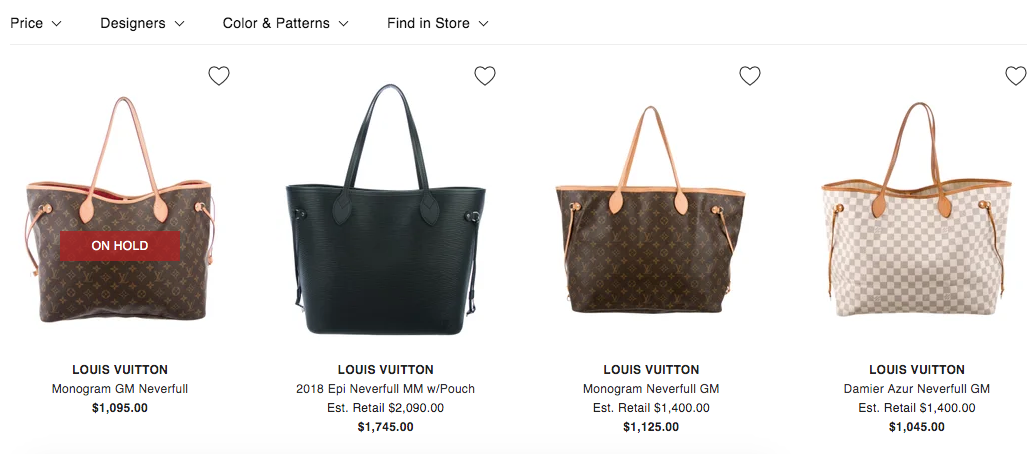Answer

Aug 21, 2019 - 08:06 AM

The (relatively newfound) love consumers have for secondhand clothing isn’t likely to die down anytime soon. Concerns about the environmental impact of fast fashion continue to loom, pushing people toward sustainable buying practices (or at least ones that appear to be sustainable). And, if the recession some experts are predicting actually hits, shoppers’ desire to save money will become even stronger.
But will online retailers be able to make a profit meeting that demand? Let’s take a look at the factors at play.
Re-commerce by the Numbers
“Re-commerce,” or ecommerce that hinges on reselling, is a large and growing industry. In 2018, the U.S. re-commerce industry was worth $24 billion, quickly catching up to fast fashion’s $35 billion. It’s predicted that the re-commerce market will be worth $64 billion in 2028, overtaking the fast fashion industry well before then.
Many strong fast-fashion retailers have seen their profits fall recently, as re-commerce is taking a bigger piece of the pie. Of course, consumerism in general is also less trendy than it once was thanks to the rise of minimalism, which might also be to blame for the losses. But there’s no doubt that re-commerce is growing fast. There’s plenty of money to be had in the industry, if brands can tap it wisely.
The Threat of Competition
One problem big names like The Real Real now face is that success breeds competition. In spite of the losses, these sites have shown that the re-commerce model can work.
Now, major department stores are forging partnerships with re-commerce sites (namely thredUp so far) to sell used clothing in stores. This poses a new threat to re-commerce sites that don’t land such big partnerships.
Of course, new re-commerce websites will also continue to pop up and add to the competition. This will make it harder for established sites to stay competitive, especially ones that are already facing losses.

With that in mind, though, The Real Real seems poised to bounce back. (StockX may also be poised for a similar comeback, but there’s less information available about the niche site.)
Re-commerce is still relatively new, and as consumers grow to trust it more, The Real Real stands to keep growing its profits. The site may also be able to start charging a higher reseller’s fee, taking a bigger cut of each sale in the future. It had bumped up this fee previously as the site grew more popular, so new fee hikes wouldn’t be unexpected.
The site’s model makes finding new customers easy, since those who sell on the site are likely to use their profits to become buyers. This helps keep customer acquisition costs low, providing another key to longevity.
The Real Real is still investing heavily in growing the brand, which has suppressed profits so far. For example, the brand has spent a lot in the past few years on opening brick-and-mortar stores. But as those big investments become less essential, the loss gap is likely to shrink even further.

Image via Pixabay
The Future of Re-commerce
Although The Real Real’s losses have been significant, they’re not so big that the brand can’t recover. While the costs of running this kind of business are inherently high (as you mentioned), the potential profits may be large enough to make up for it.
If The Real Real and brands like it can successfully tap the rising popularity of re-commerce, and stay competitive with traditional brands that want to jump on the re-commerce wagon, they should do well. Regardless of which brands rise to the top in the end, though, the used-fashion market doesn’t seem to be a fad.
Today’s young shoppers - who fashion brands often like to court most - are old enough to remember the Great Recession. Most Millennials remember the recession’s effects from when they entered adulthood, while the Gen Z crowd might instead recall how it affected their family growing up. Either way, those lessons aren’t soon forgotten.
That recession was the moment when secondhand shopping truly went mainstream. Thrift-store clothes were once looked down upon, but suddenly they became a desirable way to stay trendy while saving money. Shopping secondhand also helped alleviate guilt about contributing to environmental destruction - another issue that still resonates with shoppers under 40.
Since those shopping habits were learned the hard way, under the pressure of a massive recession, they aren’t likely to be forgotten. Unless a generation comes along that’s unfamiliar with the tightening of recession and environmental concerns, re-commerce is here to stay. And with a (smaller) recession possibly looming, and scary news about climate change frequenting the media, that generation isn’t likely to happen anytime soon.





Add New Comment